William E. “Ned” Jones: One of Houston’s first Black police officers
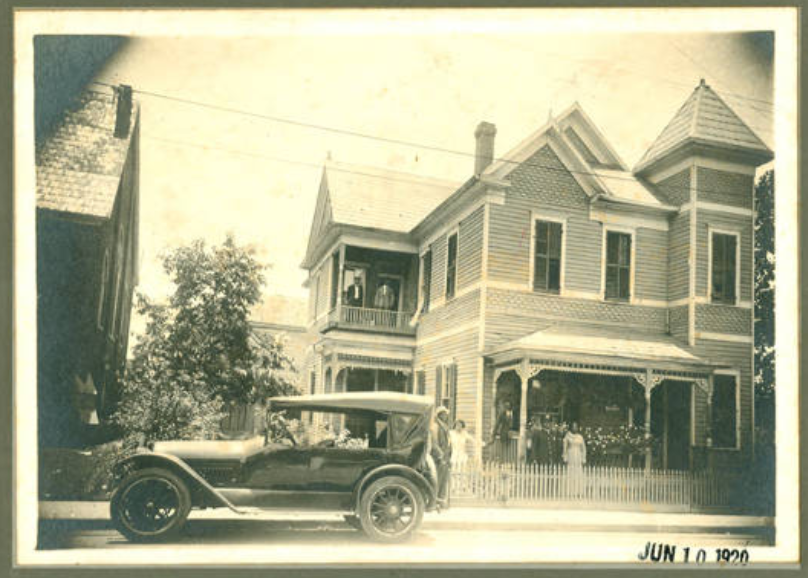
June 10, 1920 / Freedmen’s Town
During Reconstruction, Houston began establishing its police force which had previously consisted of volunteers. In 1873, the Houston police force was comprised of the Houston City Marshal and twelve racially-divided officers: 6 white and 6 black. These officers were paid $60 a month to police the city of Houston.
Keeping in line with segregation, the 6 black officers were responsible for keeping order in the Black neighborhoods. They were not allowed to arrest White people except for extremely demanding circumstances and even then, were only allowed to do so with the approval of a White officer.
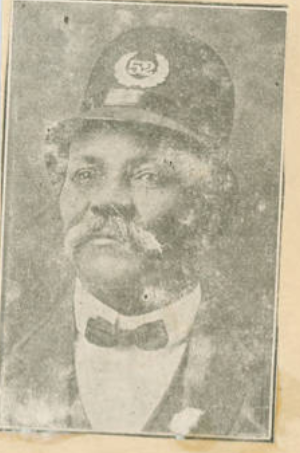
Reputation on the beat
William E. “Ned” Jones was born in 1843 and joined Houston’s police force sometime around 1890. Officer Jones mainly patrolled San Felipe street (W. Dallas) in Freedmen’s Town. He was known for being tough on crime and had the numbers to prove. A December 1904 Houston Chronicle article claims Officer Ned had the 3rd highest number of arrests in the department.
Below are several Houston Chronicle articles regarding a Jones’ reputation and a couple of his arrests.
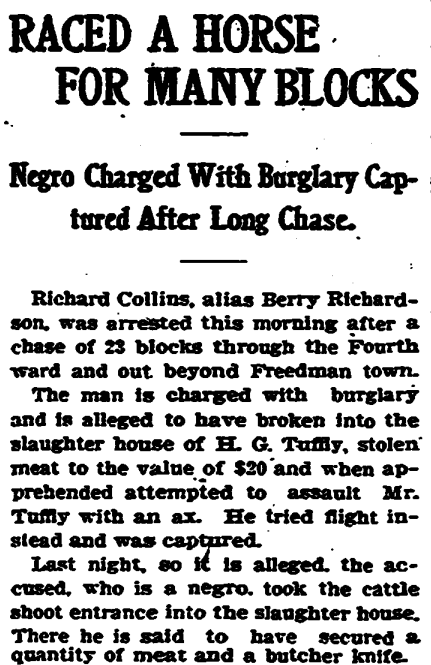
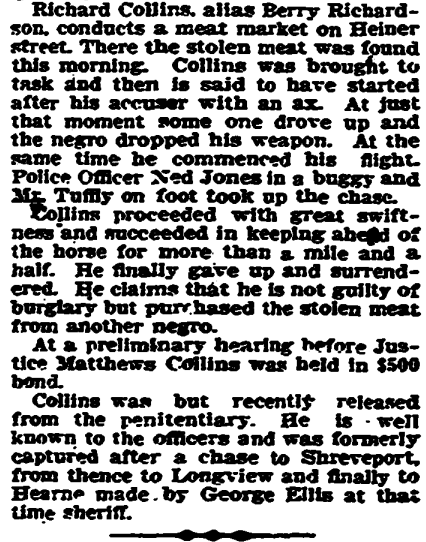
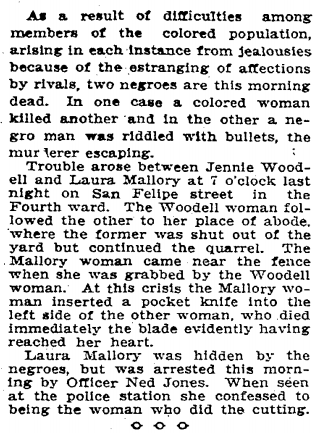
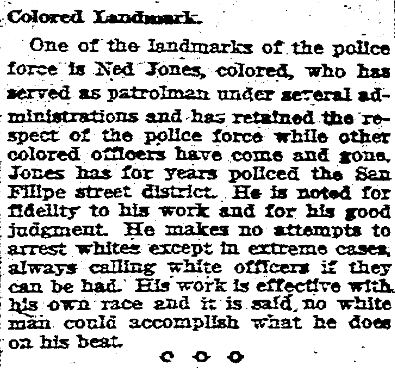
Home and family
W. E. “Ned” Jones and his wife, Martha Yates Jones lived in Freedmen’s Town at 319 Robin Street. Ned’s wife, Martha, was the eldest daughter of legendary preacher, educator, and Black leader, Reverend John Henry “Jack” Yates.
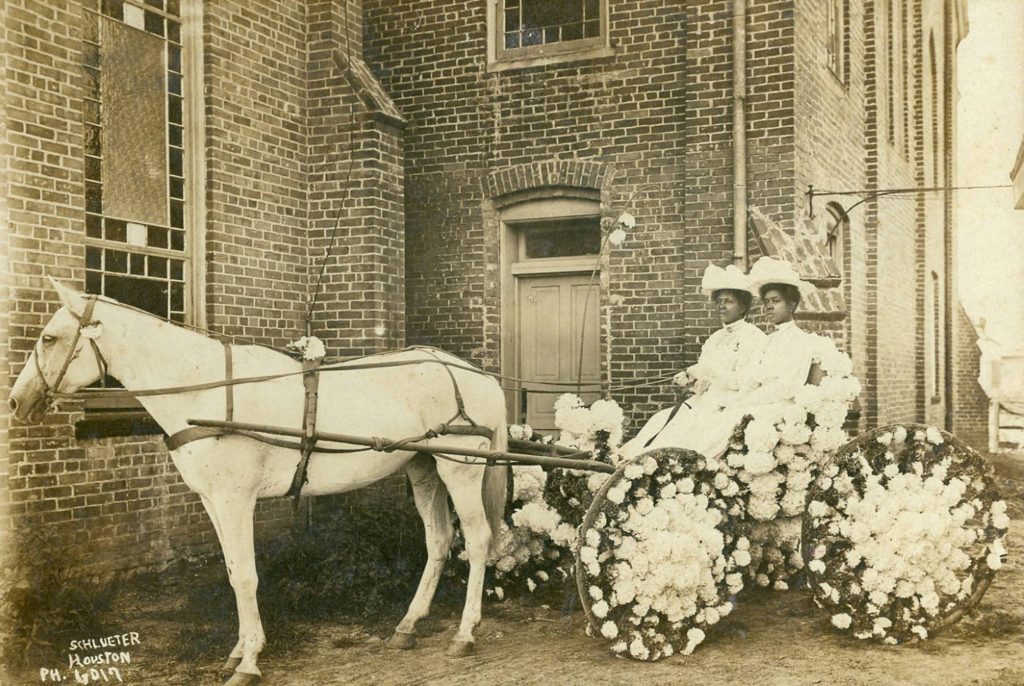
Photographer: Frank Schlueter
Location: Antioch Baptish Church (Background) / 1908
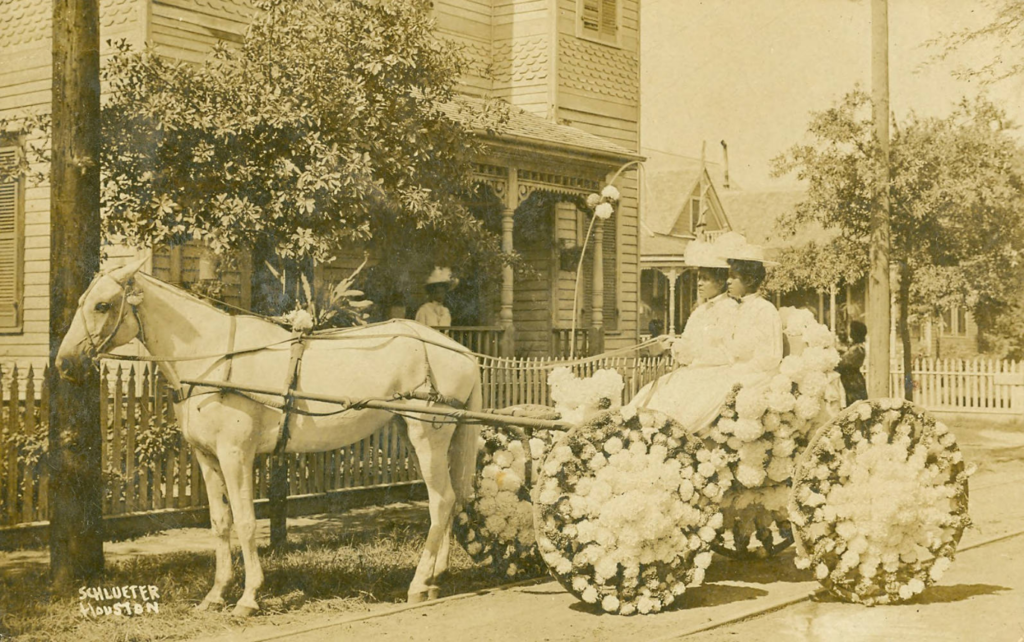
Photographer: Frank Schlueter
Location: 319 Robin (Background) / 1908
Their beautiful two-story home was located at the corner of Shaw and Robin streets, right next door to Antioch Missionary Baptist Church. Martha Yates Jones, and her younger sister Pinkie, posed for pictures at both locations for a 1908 Juneteenth celebration.
The 1950’s construction of I-45 split Freedmen’s Town in half and the eastern portion of the neighborhood is all but gone today. For this reason Robin Street, along with several others, no longer exist east of I-45.
The only evidence of Freedmen’s Town existence east of I-45 is the Antioch Baptist Church which is now surrounded by skyscrapers. It remains on the same plot of land upon which it was constructed in 1875.
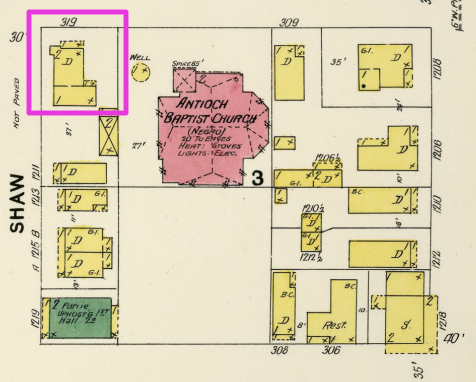
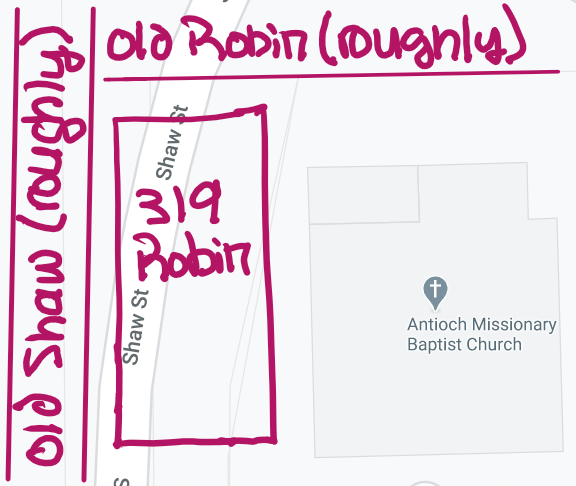
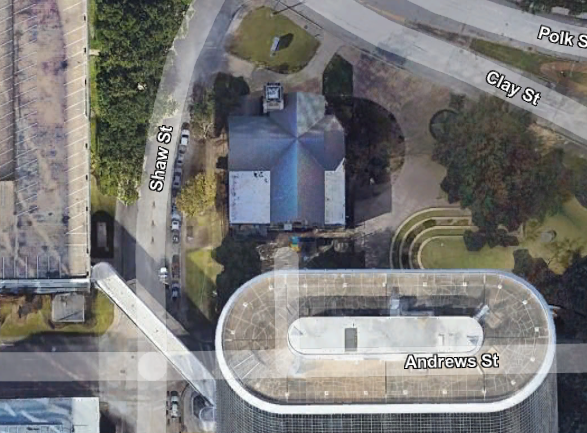
Downfall
According to a December 1923 article in The Houston Chronicle, Ned Jones had been declared insane and committed to an asylum in 1921. The article gave no details regarding the situation and was primarily focused on Ned’s wife, Martha, who needed financial assistance to pay their mortgage due to his absence. Tom C. Goodson, the Houston Police superintendent and the Houston city council agreed to assist her financially.
I was able to find a potentially related, albeit brief, event in a February 1921 Houston Chronicle article which may provide more context.
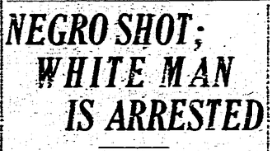
The article titled, “Negro Shot; White Man Is Arrested,” claims that Ned Jones attacked a White man named L. W. Baier with an iron bar. Baier then shot Jones and was arrested facing a potential “assault to murder” charge. Ned Jones was sent to St. Joseph’s Infirmary where he was treated for a minor flesh wound. Interestingly enough, no charges were mentioned for him.
Could this be the incident that resulted in officer Ned Jones’ commitment to an asylum? I cannot say for sure, but do with this information what you will.
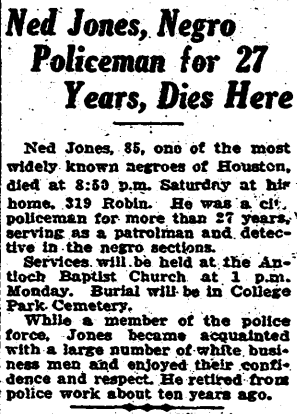
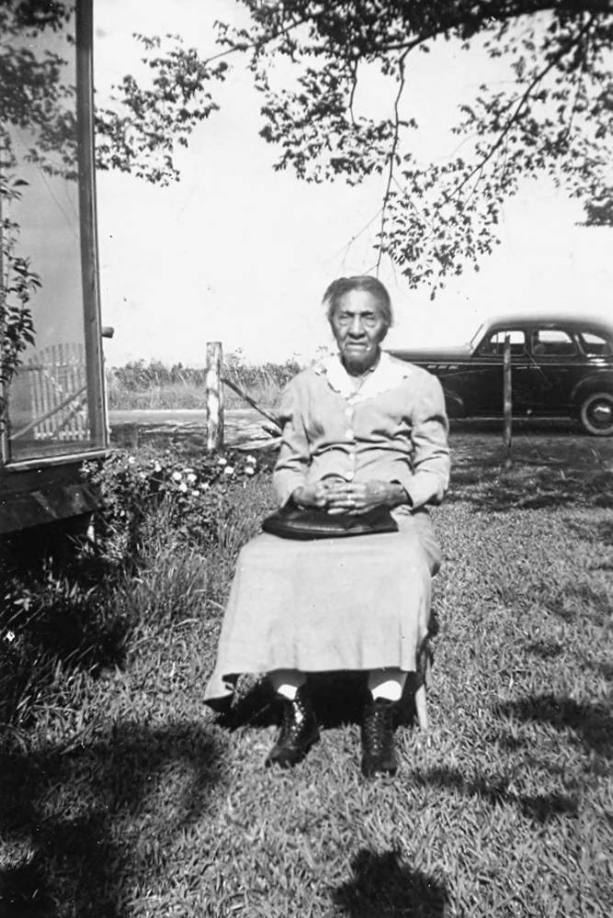
William E. “Ned” Jones passed away on December 22, 1928 at the age of 85. His wife, Martha Yates Jones, died in their home almost two decades later on February 9, 1946.
For more information regarding the current state of Freedmen’s Town and the efforts to preserve what is left of it, check out https://houstonfreedmenstown.org/.